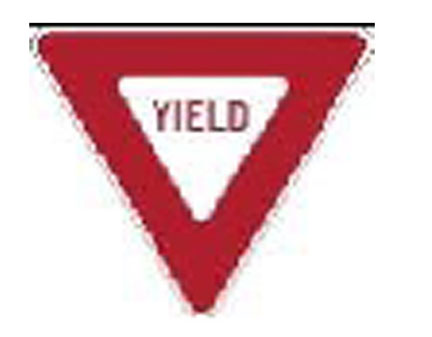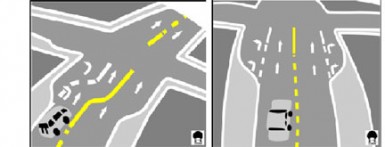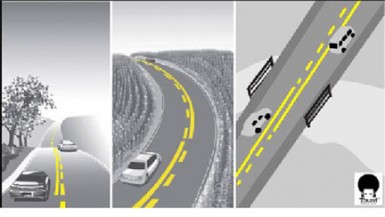By Gerhard Ramsaroop
(This is the third part of five on the traffic situation. See part four in tomorrow’s edition)
In this, the third of a five-part series on Guyana’s roads, we continue to list suggestions for better regulating of our traffic with a view to reducing the chaos and resultant high incidence of accidents.
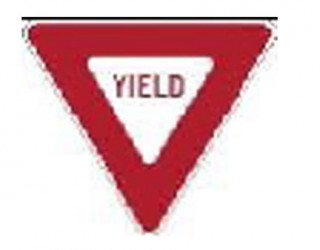
26. Recalibrate the traffic lights on the Rupert Craig (East Coast) Highway to give a longer yellow (amber). As is, the time is so short that at the speed limit of 80 km/h, drivers have to brake rashly so as not to go through the red light. Many traffic lights, particularly those along major thoroughfares like Sheriff St and Mandela Ave, need to be retimed so as to allow a smoother and longer flow of traffic. This will ease congestion.
27. Wherever there is a need for dedicated turning lanes on roads with limited space, road shoulders normally allocated for parking should be incorporated to allow for two straight lanes, as seen in the diagrams. The diagram with three lanes is applicable to junctions such as Main and Middle Sts, and the diagram with four lanes, to Vlissengen and Thomas Rds.
28. Standardise the lanes at all stops on the Rupert Craig Highway (East Coast Road) to include two straight lanes. Currently, on the southern carriageway headed west both straight lanes become a single right lane at the Ogle and Sheriff St junctions, despite there being enough space for two straight and one turning (though an additional lane has been demarcated at the Conversation Tree and UG junctions).
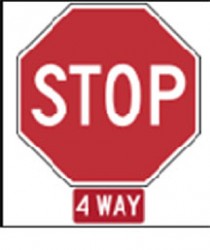
29. Scrap traffic lights at simple junctions such as D’urban St and Louisa Row, D’urban and Camp Sts, Brickdam and Louisa Row and Lamaha and Albert Sts, and make them into four-way stops. A four-way stop system is simply a first come, first serve system; whoever first comes to a full stop, moves off first. If in doubt, each driver must yield to the driver on his right. The scrapped lights can be relocated to other areas where they are more needed, for example in Agricola (where they can be sensor operated as in Eccles). An alternative is to adopt the British roundabout system whereby a small obstruction is built in the middle of the junction and cars circle around it, yielding to vehicles on the right.
30. Redraw solid double yellow lines restricting overtaking on turns, on bridges and on hills in accordance with international standards, whereby overtaking can resume immediately upon cresting a hill, crossing a bridge or exiting a turn. This is in contrast to the present lines that restrict overtaking to an unreasonable distance after you are into the straight or over the bridge or hill. Many of the new, wider bridges do not require overtaking restrictions and the use of double yellow lines on these should be reviewed.
31. Introduce a special safe driving education programme for mini-bus drivers and conductors as is done in Jamaica. Only after satisfactory completion would they be granted a mini-bus licence and ID
with photograph included, along with having to wear a uniform. Similar to Jamaica too, we should construct bus stops, using funds from paid advertising on the outside of the bus stops and include road safety warnings. The outcome of this exercise reduced road fatalities and injuries by 50% in Jamaica.
32. Road-painting contractors must be held to a higher standard whereby the lines are uniform and curve smoothly. Good quality paint that does not fade quickly must be used, and must also be applied in the requisite amount. Roads, as best as possible, should be painted during off-peak hours or at night. Painting, particularly at busy intersections, should be coordinated with traffic ranks in order to redirect traffic. Recently, there was utter chaos at the Mandela and East Bank Highway junction which was being repainted during rush hour, compounded by the traffic lights being set to blink yellow and red.
33. Set the minimum driving experience required for trucks and heavy-duty equipment to at least seven years. This would make the minimum age for these operators 25 and not 18 years as is now.
34. Make the following changes in Georgetown:
a. Make Regent St a one-way, two lane road with traffic flowing from east to west with angled parking on both sides.
b. Extend the existing three-lane arrangement on Mandela Ave to include Sheriff St up to the Rupert Craig (East Coast) Highway. Restrict slow moving, heavy vehicles to the left lane. Minibus stops must be completely off the road.
If the three-lane arrangement is not done, the lanes at traffic lights along Mandela should be repainted, allowing (where space permits) two straight lanes, for example, at the junction of D’urban St.
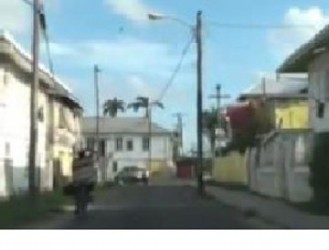
c. Return Delph and Stone Aves in Campbellville, between Duncan and Garnett Sts to major roads. This will help curb speeding on the east/west streets, and make for easier connection between Duncan and Garnett Sts.
d. Make Hunter St the major road over James St in Albouystown.
e. Make Haley St in Wortmanville a two-lane road right through by reducing the width of the eastern pedestrian pavement between D’urban and Hadfield Sts, and moving the light pole that is practically in the street.
